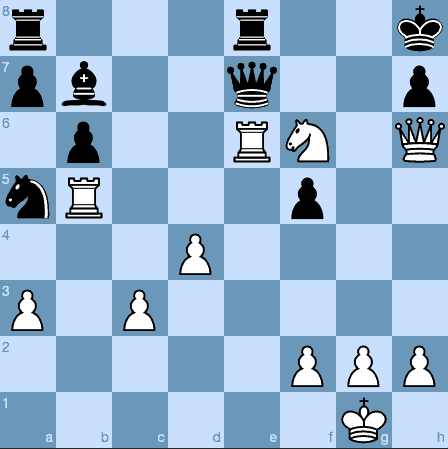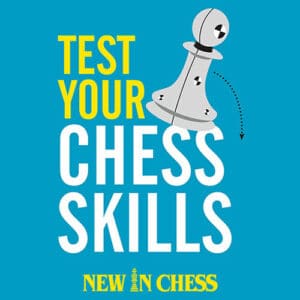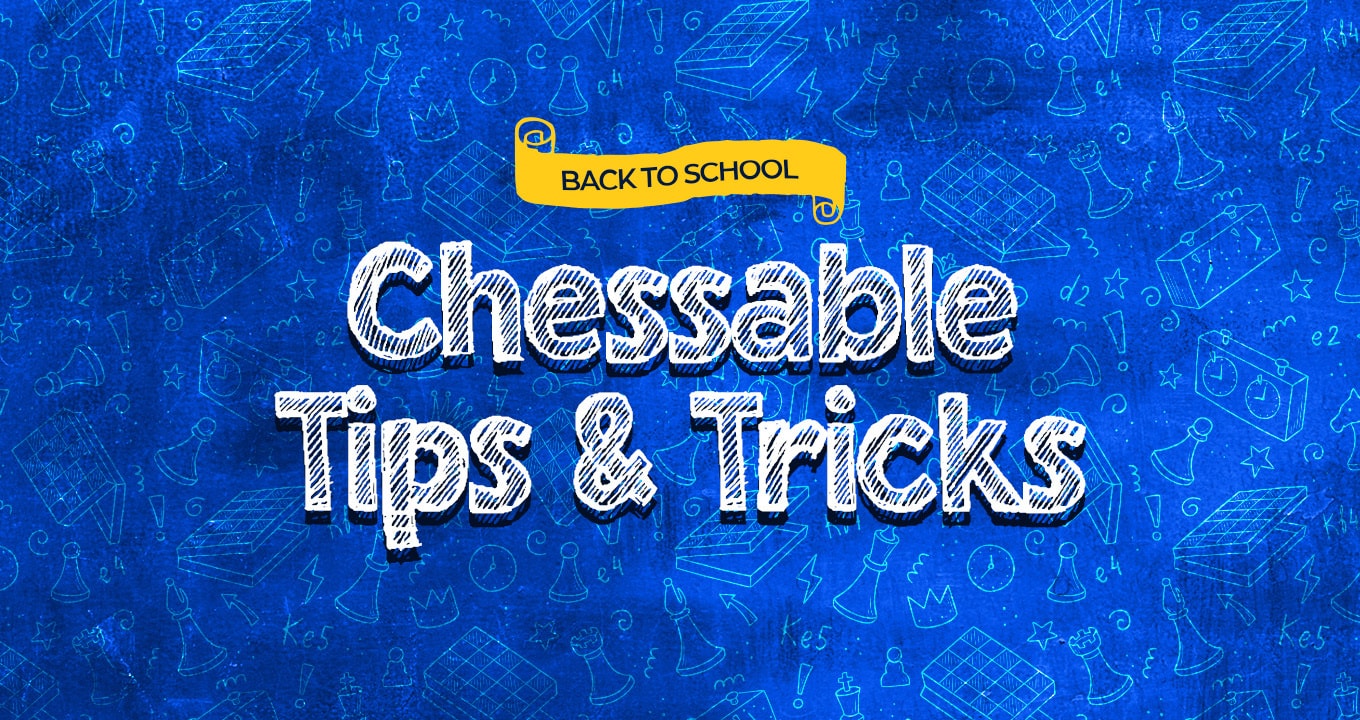We left you last Friday with four positions to ponder, all of which are included in our course, Test Your Chess Skills, by Sarhan Gulieva and Logman Guliev.
Hopefully you managed to complete your homework in good time, because today we present the answers.
Position One
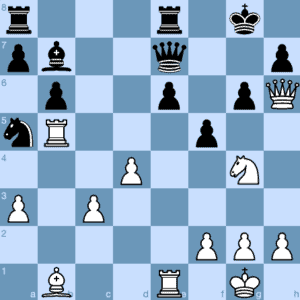
Question: Is White’s position: A. winning; B. hopeless; C. equal?
Answer: White is winning.
24.Bxf5!
In the game Tkachenko-S.Guliev (Voroshilovgrad 1989) Black had been forced for a long time to conduct a difficult defence, due to the weakness of the dark squares on the kingside. Here, he decided that the time had come for active operations and he played 23…f7–f5. At first glance, he seems right, since if the knight retreats, Black takes over the initiative. However, all the white pieces are very actively placed and this allows him to go over to an energetic attack! White has a winning position.
After:
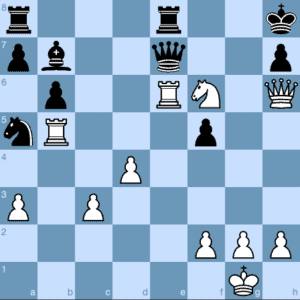
Black resigned. The pawn protection around the black king was seriously compromised. This allowed White to carry out a strong attack. One recalls Iosif Brodsky’s words:
Conclusion: A weakened king position is a serious combinational motif!
Position Two
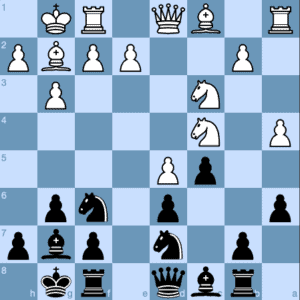
Question: What would you play: A. 12…Nb6; B. 12…Qe7; C. 12…Ne8 ?
Answer: B or C; 12…Qe7 or 12…Ne8 is correct.
12…Ne8
A minute weakness can sometimes take over one’s mind! In chess, this can be very costly. Here Black should have played 12…Ne8 or 12…Qe7, defending the d6-pawn and retaining a satisfactory position. In the game S. Guliev-Nikitin (Voroshilovgrad 1989) Black did not want to settle for a quiet defence and instead chose an ‘active’ move: 12…Nb6? but after 13.Nxd6! Bg4 14.a5 Qxd6 15.Bf4 Qd8 16.Bxb8 Qxb8 17.axb6 White had a winning position.
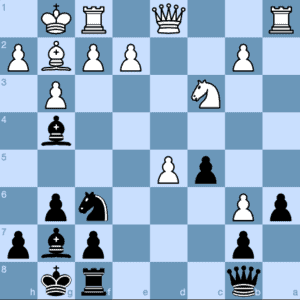
Conclusion: Look carefully for possibilities of establishing a pin!
Position Three
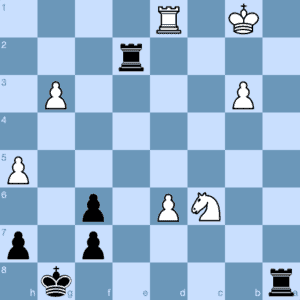
Question: Is Black’s position: A. hopeless; B. winning; C. equal?
Answer: C: The position is equal.
35…Raa2
Each side has his plusses. White has an advanced, protected passed pawn, but his king is in a dangerous situation. The black rooks have good chances of organising an attack. In such positions, it is difficult to keep one’s head and remain objective! As well as ability and knowledge, one also needs a strong character to take the correct decision.
In the game Drozdov-S.Guliev (Moscow 1996) Black overestimated the strength of his rooks and played: 35…Rea2?! 36.Rd3! Ra1+ 37.Kb2 R8a2+ 38.Kc3 Rc1+ 39.Kb4 Rxc6 40.d7 Ra8 41.Kb5 Rc1 42.d8=Q+ Rxd8 43.Rxd8+. He reached a difficult rook ending, where he eventually lost after failing to exploit all of his resources. However, if he had kept his cool, he would probably have realised that the position is equal, but that he needs to control the second rank.
After 36.d7 Rab2+Black gives perpetual check. The following variations show that White must also settle for this outcome: 36.Rd3 Reb2+ 37.Kc1 Rc2+ 37…Rg2-+ 38.Kd1? Rg2-+;
Or: 36…Rad2
(36…Reb2+ 37.K c1 Ra1+)
with advantage to Black, etc.
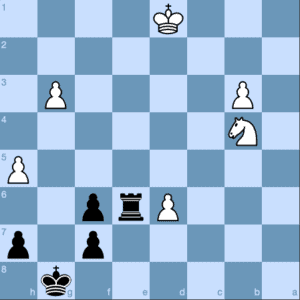
Conclusion: The miser pays twice.
Position Four
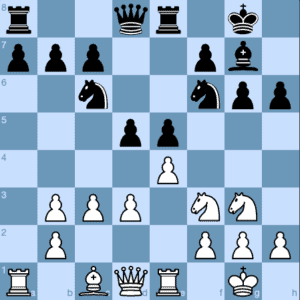
Question: Is White’s position: A. better; B. worse; C. equal?
Answer: C: The position is equal
The position is absolutely equal. Black is active in the centre, but the white position has no serious defects. The Ra1 and Bc1, even in their original positions, fulfil some functions.
White should play 13.b4!, getting rid of the backward pawn, and then continue play in quiet style, e.g. h2-h3, Qc2 (or Qb3). This would maintain equality.
But in the game Moradiabadi-S.Guliev (Kish 2003) White momentarily forgot about the compromised position of the b3-pawn and carelessly played 13.Qe2?!. Black’s reply 13…a5! disturbed his equanimity, and without any justification, he launched a pawn storm on the kingside: 14.h4?! By means of 14.Qc2 and then Be3 White could successfully defend, since his position is not really much worse. 14…h5! 15.Bg5 Qd7 16.Rad1 Ng4! 17.Nh2 Nxh2 18.Kxh2 d4!? 19.f3?! b5! Black already has a large advantage. 20.Qc2 dxc3 21.bxc3 a4 22.Ra1 Nd8! 23.bxa4 bxa4 24.Ra2 Re6 25.Ne2 Rd6 26.Rea1 Rda6! 27.Bxd8 Qxd8 28.g3 a3! And Black soon won.
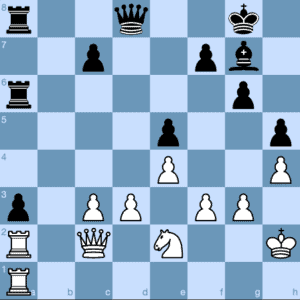
Conclusion: Don’t mess with backward pawns! In our example, we see that such a pawn can be a serious problem, when not on a half-open file.
Chessable Course
Well, how did you do? How good are your chess skills? If you need more practice then click on the image for further information about the Test Your Chess Skills Chessable course.


